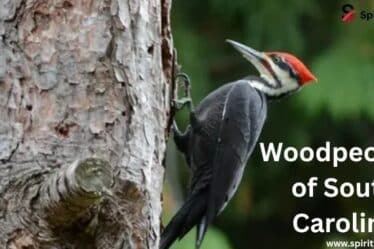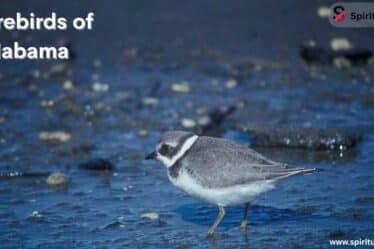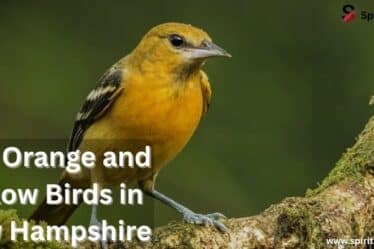
Woodpeckers in Florida are fun to watch and easy to hear. These birds are known for tapping on trees with their strong beaks. They live in forests, parks, and even in backyards. Florida is home to many kinds of woodpeckers. Each one looks, sounds, and acts a little different.
In this article, you’ll learn all about woodpeckers in Florida. You’ll discover where they live, what they eat, and how to spot them. Some are big, others are small. Some are rare, and some are common. No matter where you are in the state, you’re likely to see one. Let’s dive into the world of woodpeckers in Florida and meet these noisy little birds.
The 9 species of woodpeckers of Florida
Florida’s warm climate and wide range of habitats make it a perfect place for woodpeckers. From pine forests and wetlands to urban backyards, these birds find plenty of space to live, feed, and nest. Some woodpeckers stay here all year. Others just visit during certain seasons. Each species has its own behavior, sound, and way of feeding. Understanding these differences can help bird lovers spot and enjoy them more easily. Below, we’ll explore all nine species found across the state.
Yellow-bellied Sapsucker

The Yellow-bellied Sapsucker is a winter visitor in Florida. These birds drill neat rows of tiny holes into tree bark to sip sap. They also eat the insects that get stuck in the sticky trails. Their name comes from the faint yellow color on their belly. You’re most likely to see them in wooded parks or forests during the colder months. Unlike some other woodpeckers, they don’t stay all year.
Red-headed Woodpecker

With a bright red head, bold black wings, and white belly, the Red-headed Woodpecker stands out. It’s one of the easiest to spot. These birds love open pinewoods and woodland edges. They’re known to store food by hiding it in cracks or under bark. Sadly, their numbers have dropped because of habitat loss, but you can still find them in protected forests like Ocala National Forest or Tate’s Hell State Forest.
Red-bellied Woodpecker

The Red-bellied Woodpecker is one of Florida’s most common woodpeckers. Even though the red on its belly is hard to see, its red crown and loud calls make it easy to recognize. It often visits bird feeders, especially if there’s suet or peanuts. You’ll hear its sharp “churr” sound in both suburban areas and deep woods. These birds help control insects and spread seeds, playing a big role in keeping the forest ecosystem healthy.
Downy Woodpecker

Small and full of energy, the Downy Woodpecker is a favorite among backyard birdwatchers. It has black and white feathers and a tiny bill. Males have a red spot on the back of the head. These birds love suet feeders but also search tree bark for insects. They’re often seen in urban parks, forests, and even orchards. Because of their small size, they can nest in narrower trees than larger woodpeckers.
Hairy Woodpecker

The Hairy Woodpecker looks a lot like the Downy but is larger with a longer beak. It prefers quiet, mature forests and isn’t seen in cities as often. These birds drum on trees with loud, steady beats. They dig deep into bark to pull out beetles and ants. You’ll spot them in places like Apalachicola National Forest or Blackwater River State Forest, where old trees offer great nesting spots and food.
Red-cockaded Woodpecker

The Red-cockaded Woodpecker is a rare and protected bird. It only lives in old pine forests. Unlike other woodpeckers, it makes its nest in living pine trees, often those infected with a fungus that softens the wood. It has a small red streak on the side of its head, which can be hard to see. This bird is listed as endangered, and conservation areas like Eglin Air Force Base and Osceola National Forest are working hard to protect it.
Pileated Woodpecker

The Pileated Woodpecker is the biggest woodpecker in Florida. It has a loud call that sounds like laughter and a bright red crest that makes it easy to spot. You’ll often find them in mature forests or near fallen trees where they dig out huge holes in search of carpenter ants. Their strong beaks make them true forest carpenters. These birds are not shy, and their bold calls can be heard from far away.
Northern Flicker

The Northern Flicker is a bit different from other woodpeckers. It spends a lot of time on the ground, using its curved beak to dig for ants. It has a spotted belly, a gray face, and a black patch on its chest. Unlike others, it doesn’t rely only on trees for food. You might see it on lawns or fields, especially near woods. It’s one of the few woodpeckers that really blends ground and tree life.
Ivory-billed Woodpecker

The Ivory-billed Woodpecker is a legend. Once found in swampy forests of the Southeast, it may now be extinct. Some people claim to have seen it, especially in remote areas like Fakahatchee Strand Preserve State Park, but no solid proof exists. It was huge, with a white bill and striking black-and-white wings. If it still survives, it would be one of the rarest birds on Earth.
The largest and smallest Florida woodpecker
Size matters when it comes to identifying woodpeckers. The Pileated Woodpecker is the largest species in Florida, with a wingspan that can stretch up to 30 inches. It’s as big as a crow and known for its flaming red crest and deep jungle-like call. You’ll often find it in mature forests and national forests like Ocala or Blackwater River State Forest, where there are plenty of old trees to excavate. On the other end of the size scale is the Downy Woodpecker, weighing just under an ounce and about 6 inches long. Despite its size, it’s full of energy and often seen hopping along tree trunks or feeders, especially in urban parks and suburban habitats.
The nest cavity of woodpeckers
One of the most impressive things about woodpeckers is how they build their homes. Instead of using twigs or mud like many birds, they carve out holes in decaying trees. These nesting cavities are vital not just for woodpeckers but also for many other avian and mammal species that use abandoned holes. Excavating a nest takes days or even weeks. Birds use their strong beaks to dig into soft wood, usually choosing dead or dying trees in protected areas like Paynes Prairie Preserve State Park or St. Marks National Wildlife Refuge.
Size and shape of a woodpecker entrance hole
The holes that woodpeckers dig are more than just round peck marks. Each species makes a hole that fits its size and behavior. The Downy Woodpecker, being small, creates a narrow entrance that protects its nest from larger predators. In contrast, the Pileated Woodpecker carves out a big, rectangular hole—so big that other animals like owls and raccoons sometimes take over. These entrance holes usually lead to a chamber several inches deep, providing safety from weather and intruders.
What do woodpeckers eat?
Woodpeckers have a varied diet depending on the species and the season. Many are insectivorous, feeding on ants, beetles, and grubs hidden in wood. That’s why you’ll see them hammering away at tree bark. Others are more omnivorous, eating fruit, nuts, seeds, and even suet from feeders. The Yellow-Bellied Sapsucker is a specialist in sap-feeding, creating neat rows of holes to drink sugary tree sap and attract insects. The Northern Flicker, unique among woodpeckers, prefers ants and digs into the soil to find them. These birds play a key ecological role by helping control insect populations and spreading seeds.
Common and rarest woodpecker in Florida?
The most common woodpecker in Florida is the Red-Bellied Woodpecker. It thrives in a variety of habitats, from forests to backyards, and isn’t shy about visiting feeders or nesting in fence posts. On the other hand, the rarest is the Ivory-billed Woodpecker—if it still exists. This bird once lived in large, untouched swamps and forest ecosystems, but habitat loss has pushed it to the brink. Despite occasional reports, no confirmed sightings have proven its continued existence, making it a symbol of environmental conservation.
Identifying Woodpeckers in Florida
If you’re hoping to spot woodpeckers in Florida, you’ll need to learn a few tricks. Start by paying attention to size, color patterns, beak shape, and tail posture. Also, listen for their drumming or vocal calls—each species has a unique sound. Use a field guide, smartphone apps, or online databases to help with identification. Places like Merritt Island National Wildlife Refuge or Marjory Stoneman Douglas Pine Rocklands are ideal for observation, and many woodpeckers are surprisingly tolerant of humans.
Where in Florida Do Woodpeckers Live?
Woodpeckers live across Florida, from thick pine woods to backyard bird feeders. You’ll find the Red-Cockaded Woodpecker in longleaf pine forests in places like Tate’s Hell State Forest, while Downy and Red-Bellied Woodpeckers thrive even in suburban habitats. Some prefer old trees in protected areas, while others adapt to urban development. You’ll often see or hear them during a walk in Myakka River State Park, around a nature reserve, or near your home.
Need help with Woodpeckers?
If a woodpecker is damaging your home or trees, don’t worry—there are humane solutions. You can install artificial nest boxes to give them a better option or use sound deterrents to encourage them to move. For serious issues, contact local wildlife management or pest control professionals. You can also reach out to the Florida Fish and Wildlife Conservation Commission or visit resources like for expert advice on coexistence and conservation.
How Common Are Woodpeckers in Florida?
Woodpeckers are very common in Florida, especially during the spring when nesting behavior increases. Some species, like the Yellow-Bellied Sapsucker, are only here in winter, while others, like the Hairy Woodpecker, stay year-round. Their population levels are stable overall, but some are declining due to urban development and habitat loss. Keeping green spaces and protected areas healthy is key to helping them thrive.
Can Woodpeckers Spread Disease?
Woodpeckers rarely spread diseases to humans. While all wild birds can carry parasites like mites or ticks, woodpeckers are not major health risks. In fact, they benefit the environment by improving biodiversity, reducing harmful insects, and maintaining ecological balance. If you spot one pecking on your house, it’s more of a behavioral issue than a health concern. You can prevent damage by using visual deterrents or providing nesting sites in your yard.
Conclusion
Florida is a top destination for woodpecker lovers. With their wild calls, busy pecking, and role in the environmental impact of forest health, these birds are more than just background noise. Whether you’re hiking through Big Cypress National Preserve, exploring a nature reserve, or sipping coffee in your backyard, chances are you’ll meet one of these feathered carpenters. Take a moment to watch, listen, and appreciate the rhythm they bring to the Sunshine State.



